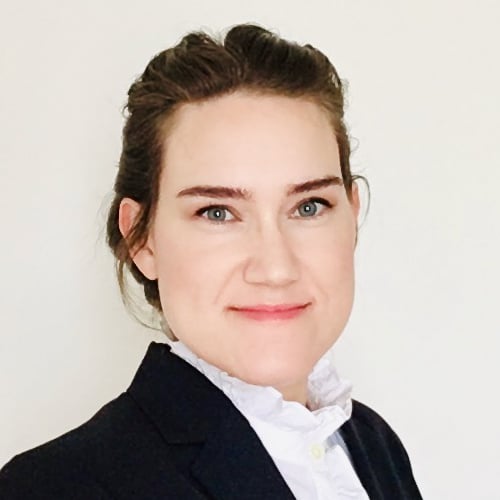

Rachel Johnson is one of Stroud Water Research Center’s MVPs. She has helped train hundreds of volunteers and watershed organization staff in the Delaware River basin on how to monitor their local streams using inexpensive, open-source technology.
She not only knows her way around an EnviroDIY™ Monitoring Station; she offers the kind of support that makes volunteers like George Seeds sing her team’s praises.
“I feel very supported,” says Seeds, a Penn State Master Watershed Steward. “Dave Bressler, Shannon Hicks, and Rachel Johnson have been absolutely fantastic. I can’t say enough about how enjoyable it’s been to work with them.”
In addition to spreading good vibes everywhere, Johnson is hard-working, a trait she gets from her mother, she says, who “worked ceaselessly to provide for my sisters and me growing up. My mom has proved to me that if you work hard and dream big, anything is possible.”
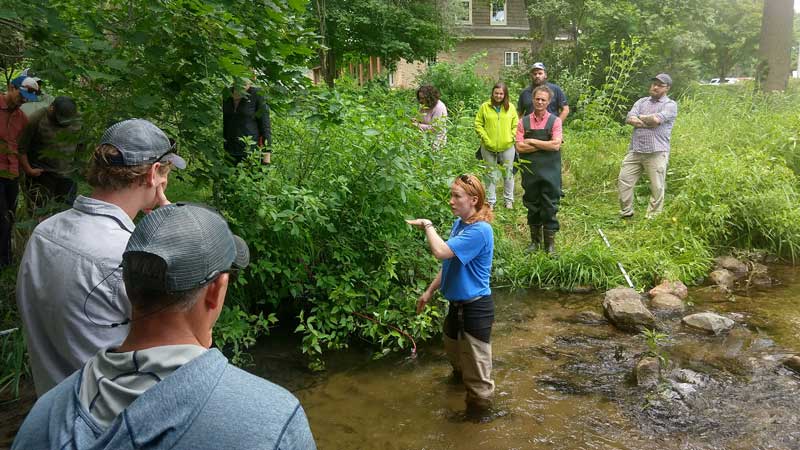
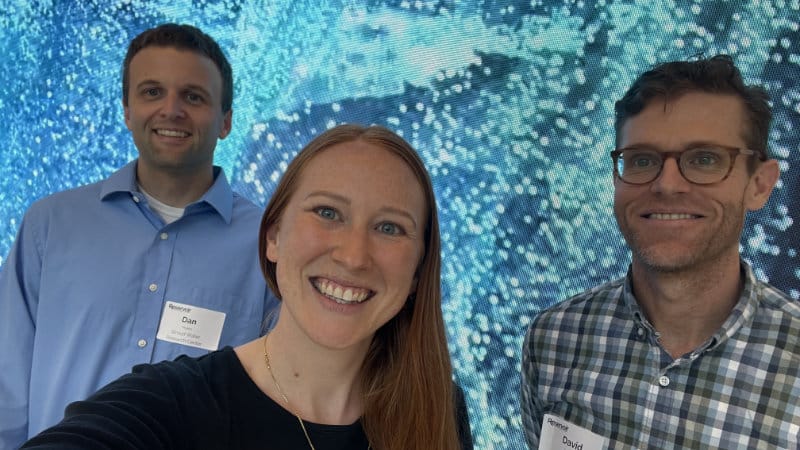
That encouragement meant a lot to Johnson, who was diagnosed with ADHD at an early age.
“School never came easy to me. I remember struggling through my entire educational career, until field-based courses and labs were introduced.”
The change was dramatic. Her grades improved, and she was excited about learning.
“Being near water has always been a refuge for me, where I feel at peace and can think clearly.”
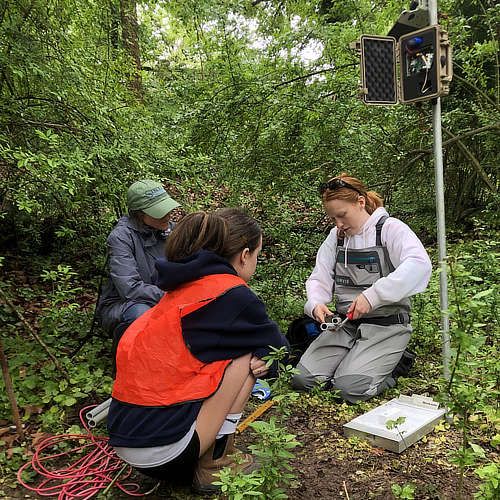
So Johnson began to dream about a career in science and environmental conservation.
At Bloomsburg University, she led a research project to study the eastern hellbender salamander (Cryptobranchus alleganiensis), a sensitive freshwater species that is threatened by habitat loss and degradation.
She explains, “These fully aquatic, long-lived salamanders serve as an indicator species of stream health due to their highly permeable skin and specialized habitat requirements. We used environmental DNA and snorkel-based surveys to determine the population status, spatial distribution, and microhabitat use of the eastern hellbender. My involvement in this project fueled my passion for water quality research.”
After graduation, she says, “I managed a cafe near Philadelphia while trying to figure out how to get my foot in the door of the environmental field. One day, I received a call from my now husband, saying that there were ‘water people’ at the Pennypack Ecological Restoration Trust, where he was an intern, installing two monitoring stations on Pennypack Creek. He told me to come check it out.”
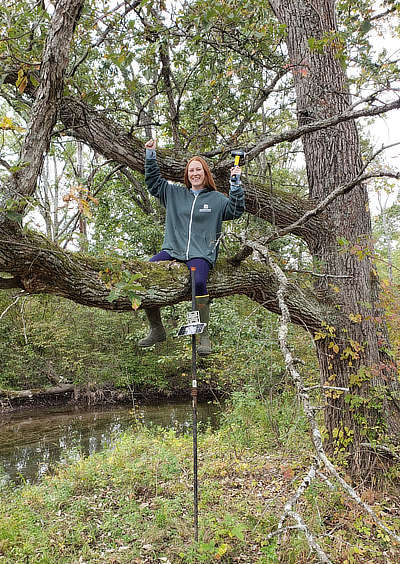
The water people were the Stroud Center’s Shannon Hicks and David Bressler, who were planning to install EnviroDIY Monitoring Stations throughout the Delaware River basin as part of a community science project of the Delaware River Watershed Initiative.
Johnson was inspired by the idea of making water quality data accessible and wanted to be a part of the project: “I volunteered over the next few weeks as we installed more stations, trying my hardest to soak up all of the information that was thrown at me.”
Hicks was impressed and hired Johnson to continue the work full-time.
“I feel as if I landed my dream job as my first position out of my undergraduate studies,” Johnson says.
Six years on, Johnson is realizing her next big dream — pursuing a master’s in water science and policy at the University of Delaware. For her graduate research, she will put her knowledge of community-led stream monitoring to good use. She is joining the Ecosystem Ecology Group led by Marc Peipoch, Ph.D., to look for patterns in the sources, productivity, and transport of river algae in the Delaware River basin using real-time continuous monitoring technology and field sampling techniques.
Johnson says, “I feel an immense sense of loyalty to the Stroud Center because they believed in me and gave me a chance to start my career before anyone else would. I knew I always wanted to pursue a higher education, and being able to collaborate with the Stroud Center during my graduate studies is a dream come true.”
Johnson isn’t shy about expressing gratitude for those who helped her get to where she is today: her mother, her first great female role model; Chris, her husband and biggest cheerleader; her undergraduate professors who nurtured her potential and connected her with research opportunities; and Shannon Hicks, of whom she says, “I have learned so much from working with her, and I will be forever grateful that she took a chance to hire me. She has served as an advocate, mentor, and friend during a crucial time in my life and career.”
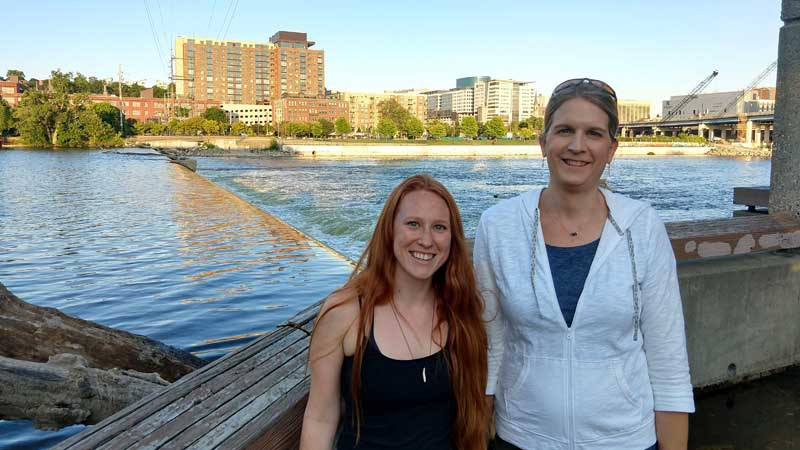
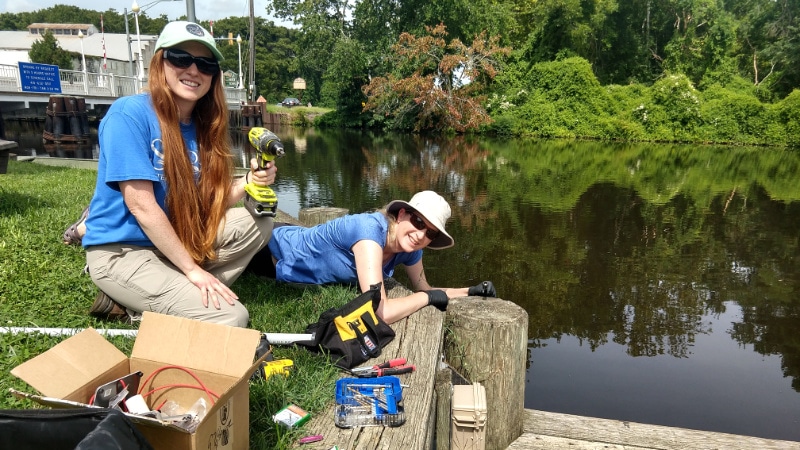
Bressler says, “Rachel has been a tremendous help and leader on the community science team. She is smart, energetic, a good communicator, proactive, and has a positive attitude. Plus she is a good friend and wonderful colleague. She is an asset to the Stroud Center and hopefully she’s able to return to the community science team after her master’s degree.”



